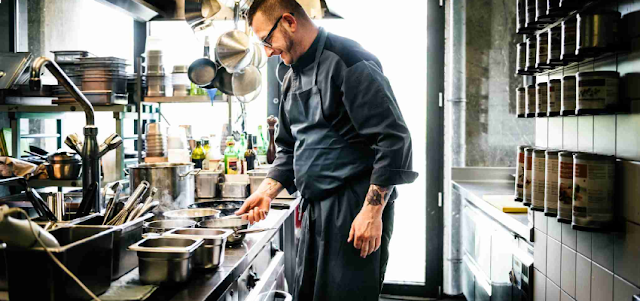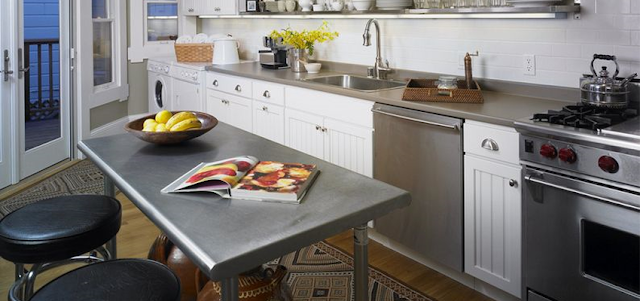How to Buy the best Commercial Range – A Buyers Guide
Planning to replace your old kitchen range for a new one?
Starting your commercial catering business and not yet decided the right type of range for your kitchen?
Before you make
the decision, it is important that you do your research. The range is one of the
most important commercial kitchen
equipment in any kitchen and the efficiency of it directly impacts the
ability of your chef to prepare the best cuisines within a limited time span.
Here is what you
should consider first before buying one,
Type
In ranges, we have
a number of variations. The first thing is to decide the type you need.
Depending on the type of fuel used there are three basic categories – Electric,
Gas, and Dual-fuel. Now each of these types comes with their own pros and cons
but the first consideration should be the type of fuel available in your
kitchen.
Size
Commercial
ranges come in different sizes and you can pick according to your kitchen space
and use. 30-34inch wide units are most common in commercial cooking, but they
can be wider, ranging up to 48 inches.
Capacity
The capacity is
an important factor to consider and should be commensurate with the amount of
food you would like to prepare in a single batch. If you are running a big
kitchen, you should opt for multiple ranges of different capacities to meet the
varying needs.
Budget
Budget is always
an important factor to consider before making the buying decision. You should consider
not only the one-time cost of the equipment but also the cost of its regular
operation. Electric ones are cheaper compared to the Commercial Gas
Cooktops but if electricity is priced higher than natural gas rates in
your area, the operating expenses will be much more for the electric variants.
Preferences
Ultimately you are buying a source of heat for preparing food and what your chef prefers for the type of cuisines served is an important consideration. The burner flames in gas cooktops give a visual idea of the temperature, which might be helpful for frying and sautéing. On the other hand, for baking related preparations, an electrical variant is preferred because of the even heat it generates.
The different
types of ranges - their Pros and Cons
To decide the
best one for your kitchen, let us take a quick look at the pros and cons of all
the variants available.
1.
Electrical
The 3 primary variants under the electrical category includes, the
coil-top models, the smooth-top models, and the induction top models.
Coil-top – This variety comes with exposed heating elements on which
the cookware is placed directly. The primary drawback of this variety is that
the coil takes time to heat up and cool which is not very suitable for
commercial places. Moreover, these are prone to uneven heat distribution which
can be a problem.
Smooth-top – Comes with a seamless
ceramic glass cooktop and the heating element is placed under the top which
ensures even distribution of heat and makes it easy to clean. The premium units
of this variety come with convection ovens and use fans for better circulation
of heat leading to less cooking time, which makes it efficient for professional
food preparations. On the downside, all types of kitchenware like glass or
cast-iron cookware can not be used on these tops and the surface is prone to
scratching.
Induction-top – Ideal for quick cooking
in restaurants. These units use magnetic coils under the glass surface and the
elements do not get hot, thus providing more steady heat immediately. This
variety can boil water 50% faster and uses most of the energy generated to prepare
the food instead of heating up the pan and other elements. On the downside,
induction-top ovens are expensive, and you can use only magnetic cookware on it.
2.
Gas
The Commercial
Gas Cooktops Sydney, Perth, Brisbane, Melbourne has certain
benefits that are often considered paramount in professional food preparations.
Apart from the superior visual control over the gas flame and uniform heating,
these are compatible with every cookware and they work irrespective of
electricity disruption. On the downside, these are more expensive than many of their
electrical counterparts and you need a steady supply of gas in your kitchen to
run them.
The different gas models include - standard models, mid-range
models, premium models, and pro-style models.
·
The standard models are least
expensive but are not suitable particularly for commercial kitchens.
·
The good quality mid-range
models come with high-performance burners, digital controls for time and
temperature, for ease of cooking.
·
Along with high-performance
burners the premium ones typically include convection ovens and stovetop
griddle, electronic control, and other basic features.
·
The pro-style models are ideal
for large food and catering businesses. These are typically provided with a
super-hot 5th burner, multiple convection ovens, and roll-out
racks.
You can buy any
or a combination of the above-mentioned gas-based ones as per the need of your
business. Also, keep in mind that the number of burners will vary depending on
the unit you settle for. Always make sure to install a quality exhaust
hood canopy over the range for proper exhaust.
Gas ranges are
available in 3 different styles – the freestanding, slide-in, and front
control. While the free-standing versions are the least expensive the other
varieties come with their own pros. The professional or pro-style ones are best
suggested for use in commercial kitchens.
Dual-fuel
The dual-fuel
variant combines gas stove top with an electric oven thus making a perfect
compact unit to serve the different types of cooking needs of a commercial
kitchen. The number of burners and ovens vary depending on the model. These are
expensive but they come with a bunch of ultra-cool features and flexibility
that justifies the price point.
The top Commercial
Gas Cooktops Supplier from Sydney maintains the best collection of all
the types of ranges to choose from. You will find stainless
steel bench, sinks and shelves as well as other benchtop
catering equipment from the same dealer under one roof.






Comments
Post a Comment